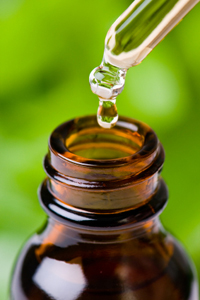How To Use Essential Oils in a Colon Cleanse or Implant
How To Colon Cleanse with Essential Oils
Kristina Amelong, CCT, CNC, discusses the use of essential oils in a colon cleanse and/or in coconut oil suppositories. Using appropriate essential oils can enhance the therapeutic effects of your colon cleanse or implant.

▶︎ Read Important Cautions and Disclaimers
Topical Application
The essential oils that you test well with should be applied to the abdomen in a clockwise motion prior to a colon hydrotherapy session or home enema to encourage a comfortable release.
If the essential oils irritate your skin, a carrier oil such as coconut oil or aloe vera juice can be used to dilute them before or after application.
Essential oils can be applied without dilution directly to the bottoms of the feet. The bottoms of the feet are highly absorptive and a safe location for the application of any essential oil.
Enema or Colon Implant Solution
Add 2 to 4 drops of a cleansing essential oil to an emulsifying soap such as Dr. Bronner's soap or one of the Optimal Health Network's made-for-enema soaps. By mixing the essential oils with the soap, the oils will disperse more fully throughout the enema solution. Cleansing oils include OHN Colon Cleanse Blend, peppermint, or any citrus oil. This formulation helps your body to thoroughly release during the colon cleanse.
▶︎ Remember to always check that your essential oils are safe for internal use and skin test first.
▶︎ Essential Oil Suggestions for Use with Enemas or Colon Implants
▶︎ How To Take a Home Enema
▶︎ What Is a Colon Implant?
Colon Hydrotherapy Session
During a colon hydrotherapy session, ask your therapist to add 3 to 20 drops of one or more of our suggested cleansing essential oils to a small amount of water for a few minutes prior to the final release. This will allow your body to absorb the healing properties of the essential oils directly into the colon.
▶︎ Remember to always check that your essential oils are safe for internal use and skin test first.
▶︎ Essential Oil Suggestions for Use with Colon Hydrotherapy Sessions
Rectal Implant
After a colon cleanse — and never without cleansing the colon first — implant 2 ounces of olive oil with 3-20 drops of your skin-tested essentials oils. Use an Implant Syringe with Silicone Colon Tube to deliver the remedy into the colon. Leave the rectal implant in the body for at least 30 minutes. The solution is best left in the colon for several hours. Hold it for as long as your body will hold it. You don't need to evacuate or rinse it out. You can go about your day, but stay close to a toilet until you pass the implant. Some people are able to hold implants for a long time, until their next bowel movement, but others can't hold implants for very long. The smaller the volume of solution in the implant, the more likely you'll be able to hold it longer.
In some cases, rectal implants can improve bowel regularity.
▶︎ Remember to always check that your essential oils are safe for internal use and skin test first.
▶︎ Essential Oil Suggestions for Use with Rectal Implants
Coconut Oil Rectal Suppositories
Delivered via rectal suppository, essential oil implant recipes support healing from hemorrhoids, constipation, yeast infections, and other colon-related ailments, and more broadly support a healthy colonic mucosa.
▶︎ Remember to always check that your essential oils are safe for internal use and skin test first.
▶︎ Essential Oil Suggestions for Use with Rectal Suppositories
▶︎ How To Make Coconut Oil Rectal Suppositories
By Kristina Amelong, CCT, CNC
I-ACT-Certified Colon Hydrotherapist
Certified Nutritional Consultant
IMPORTANT CAUTIONS & DISCLAIMERS
We strongly advise you to consult with your medical doctor or a knowledgeable health practitioner before using any essential oils internally to ensure a safe and optimal program for your individual body.
When planning to introduce a new essential oil into your healthcare program, test one drop on a small patch of skin first (e.g., on the underside of the forearm). Sensitivity to particular essential oils is highly individual. If the skin feels hot or turns red, this indicates sensitivity, and this essential oil or blend should NOT be used in your healthcare program. Apply a vegetable oil (e.g., olive or almond) to the area, which will dilute the essential oil. Washing with water is less effective.
Apply only one new essential oil or blend at a time to the patch of skin to determine how your body responds. Wait 30 minutes before testing another new essential oil.
DO NOT attempt to self-diagnose or prescribe any natural substances for health conditions that require professional attention. Consult your healthcare professional about any serious disease, medical condition, or injury, or if you are pregnant, nursing, or planning to become pregnant.
DO NOT use wild tansy, clary sage, sage, fennel, wintergreen, or hyssop essential oils during pregnancy.
LATEX ENEMA BAGS: Do not use essential oils in latex (rubber) enema bags. Essential oils degrade latex over time. Use essential oils only in silicone, stainless steel, or plastic enema equipment.